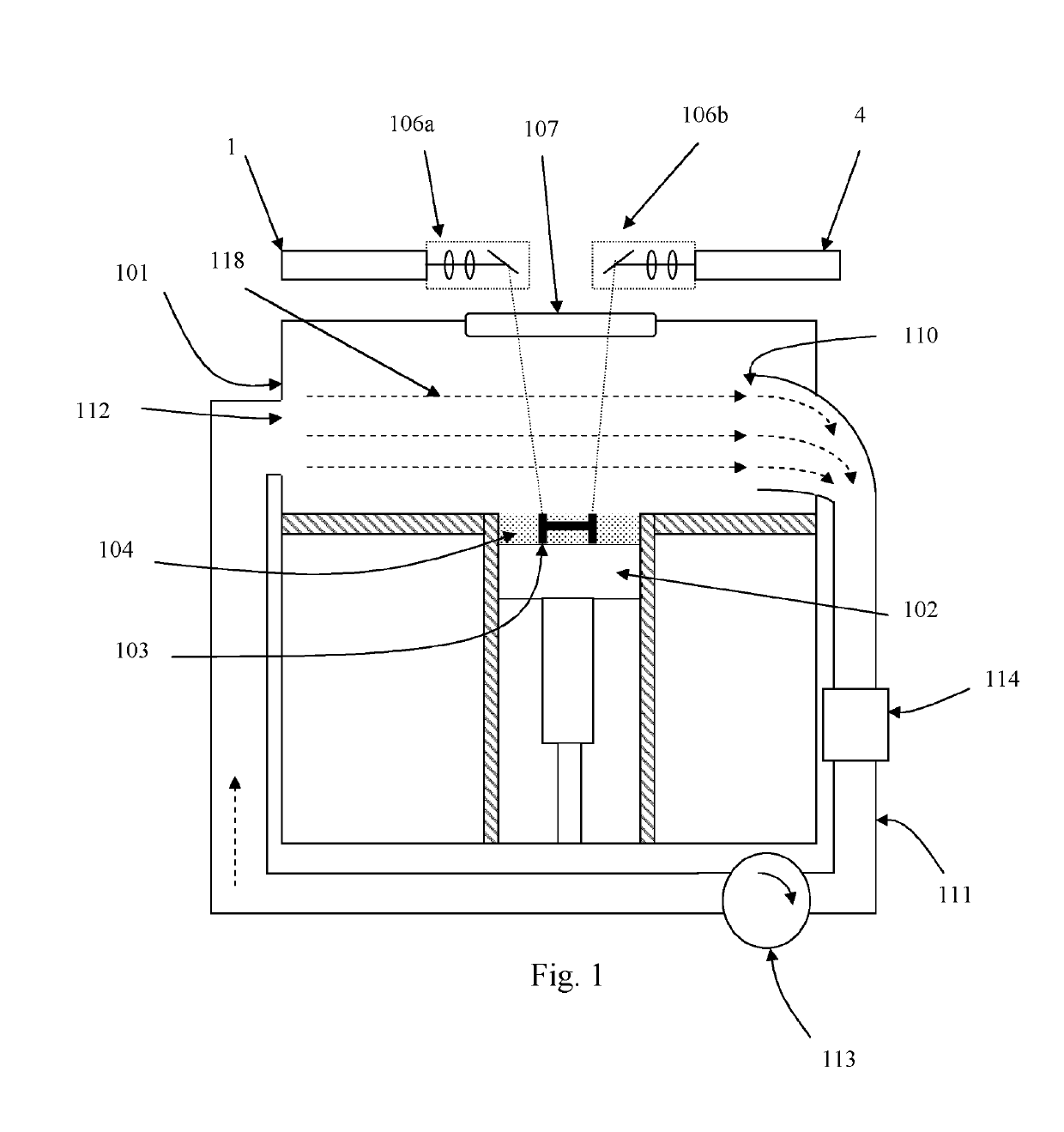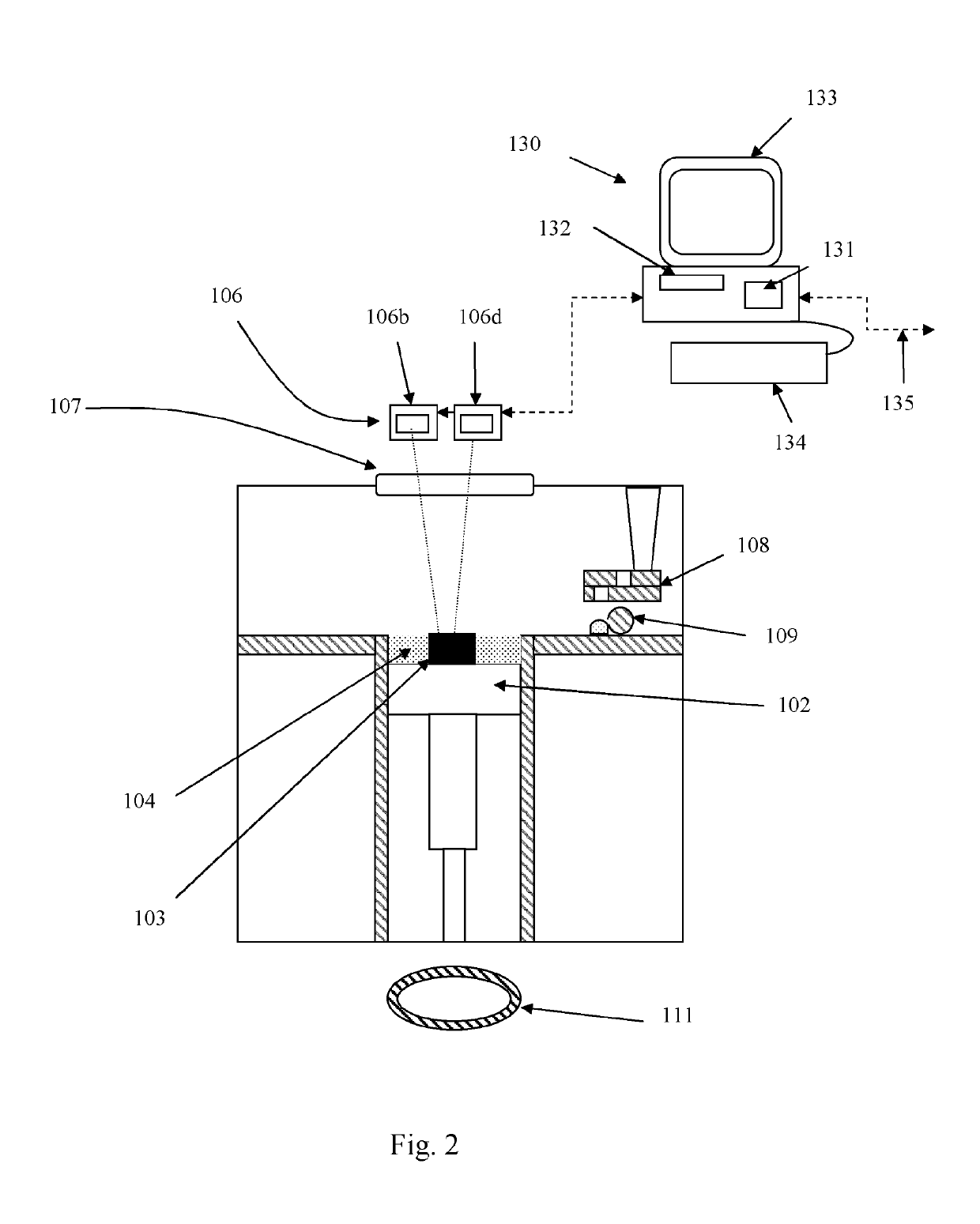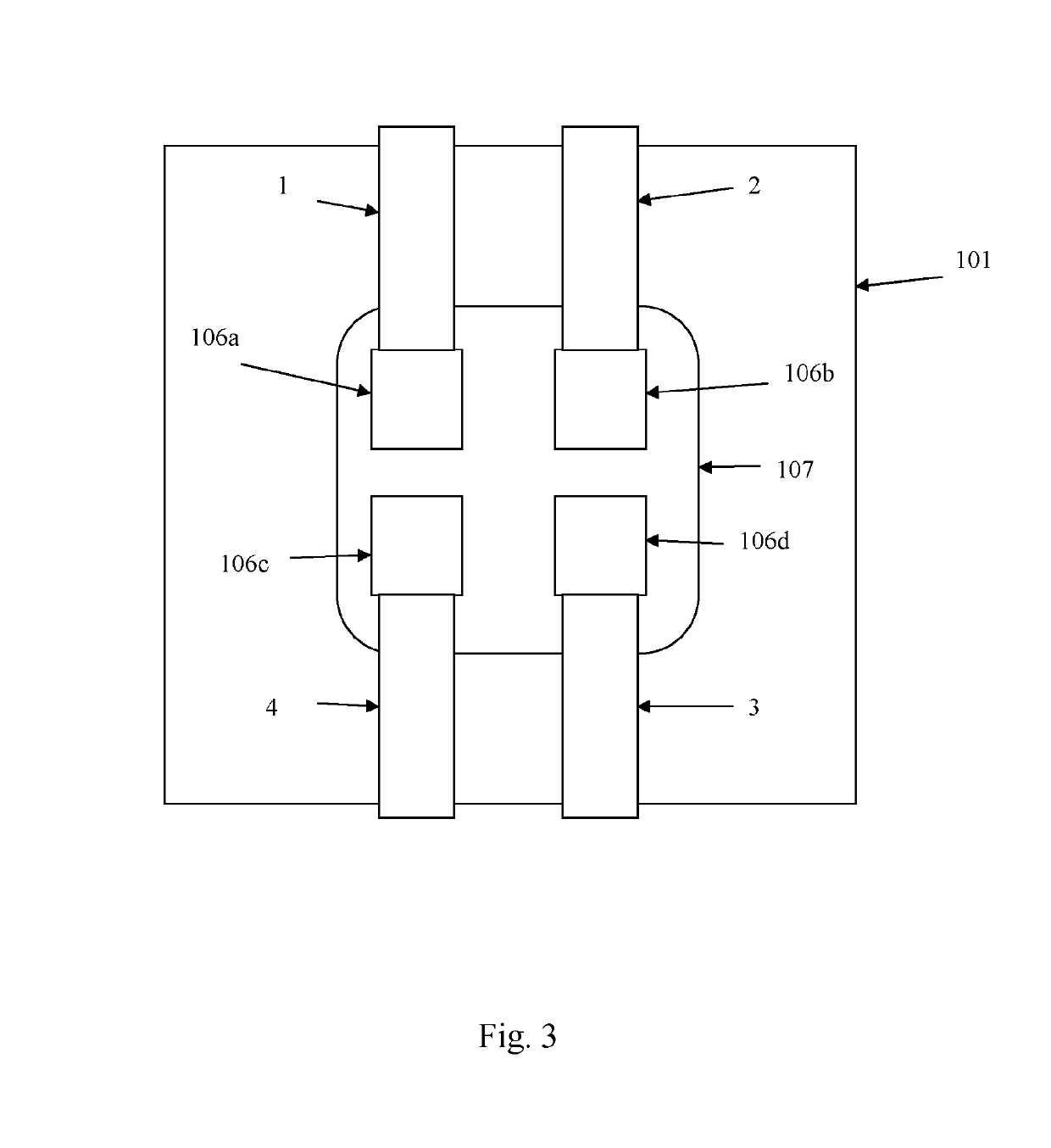Selective laser solidification apparatus and method
a laser solidification and laser technology, applied in the field of selective laser solidification apparatus and method, can solve the problems of increasing the cost of the apparatus by increasing the number of lasers, limiting the speed of the build set, and affecting the quality of the laser, so as to achieve a smaller radius and improve the quality of the spo
- Summary
- Abstract
- Description
- Claims
- Application Information
AI Technical Summary
Benefits of technology
Problems solved by technology
Method used
Image
Examples
Embodiment Construction
[0039]Referring to FIGS. 1 to 3, a laser solidification apparatus according to an embodiment of the invention comprises a build platform 102 for supporting an object 103 built by selective laser melting powder 104. The platform 102 can be lowered in the chamber 101 as successive layers of the object 103 are formed. Layers of powder 104 are formed as the object 103 is built by dispensing apparatus 108 and a wiper 109. For example, the dispensing apparatus 109 may be apparatus as described in WO2010 / 007396. Laser modules 1, 2, 3 and 4 each generate a laser beam for melting the powder 104, each laser beam directed as required by corresponding optical modules 106a to 106d under the control of a computer 130. The laser beams enter the build chamber via a window 107. Each laser beam can be independently steered to solidify separate areas of the powder bed 104. The range of locations to which each laser beam can be steered on the powder bed 104 defines a scanning zone, illustrated in FIG. ...
PUM
| Property | Measurement | Unit |
|---|---|---|
| area | aaaaa | aaaaa |
| length | aaaaa | aaaaa |
| total length | aaaaa | aaaaa |
Abstract
Description
Claims
Application Information
 Login to View More
Login to View More - R&D
- Intellectual Property
- Life Sciences
- Materials
- Tech Scout
- Unparalleled Data Quality
- Higher Quality Content
- 60% Fewer Hallucinations
Browse by: Latest US Patents, China's latest patents, Technical Efficacy Thesaurus, Application Domain, Technology Topic, Popular Technical Reports.
© 2025 PatSnap. All rights reserved.Legal|Privacy policy|Modern Slavery Act Transparency Statement|Sitemap|About US| Contact US: help@patsnap.com



